The Buddleja, common known as Buddleia, boasts beautifully bulbous flowers that are infamous for their sweet scent and vivid colours. Offering a selection of varieties that range from dwarf varieties to larger shrubs, these plants can be a useful and attractive addition to any garden.
Being easy to maintain and fast-growing, they are a great choice for all growers regardless of experience. Here is your ultimate guide to growing and caring for your buddleia shrub.
More...
About the Buddleia Plants
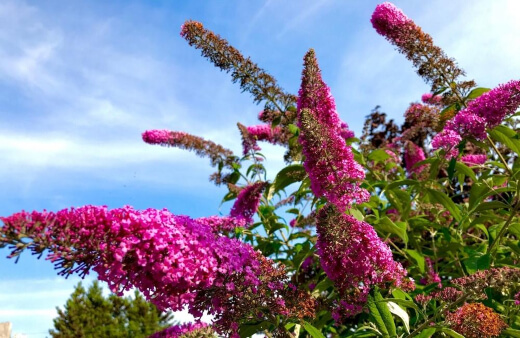
With impressive blooms that can add bursts of colour and texture to compliment any garden collection, the Buddleia plants are also famed for their ability to attract a variety of wildlife.
Their flowers can vary in colour depending on which Buddleia you grow so you will have a selection of beautiful blooms to choose from for your needs. Either way, these plants are known for their hardy and carefree characteristics making them a popular choice for many growers.
Buddleja davidii is commonly referred to as the butterfly bush due to its ability to attract butterflies and other nectar-loving birdlife with its honey-scented flowers.
These plants are native to central China and parts of Japan where they naturally thrive in cool to mild tropical regions. For this reason, they make great additions to the Australian climate.
Buddleia shrubs are a part of the Scrophulariaceae family where plants bloom with large cone-shaped flowers that are notorious for their sweet aromas.
Being fast-growing arching deciduous shrubs, these plants can range in size depending on which variety you grow. On average they can grow to be about 1 to 5 metres high and around 1.5 to 2 metres wide.
These shrubs can be used to quickly fill an empty spot in your garden as a feature plant or they can be planted alongside other garden plants to add long-lasting colour to any outdoor space.
Let’s have a look at some of the most popular varieties to grow in Australia.
Popular Buddleias in Australia
Buddleja davidii ‘Black Knight’Being the most commonly grown variety, the Buddleja ‘Black Knight’ features intense deep purple flowers that attract butterflies, birds and bees with their sweet aroma. Growing up to 3 metres high, this medium shrub variety is easy to manage and fast-growing. |  |
Buddleja davidii ‘Nanho Blue’This variety has slender leaves and blooms with lilac-blue flowers on narrow stems. Growing up to 1.5 metres high, this smaller growing variety is perfect for gardens that don’t have space for a large shrub. | 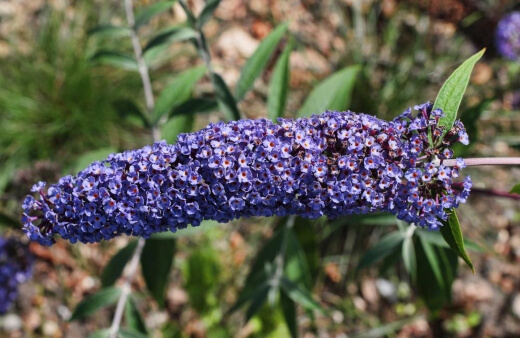 |
Buddleja davidii ‘Pink Delight’With huge long pink scented flowers, this larger growing variety is also one of the most popular Buddleja to grow. They can reach up to 4 metres high and 2 metres wide. |  |
Buddleja davidii ‘Royal Red’The vibrant deep red scented flowers will also attract butterflies and other nectar-loving wildlife. This large growing variety features long, spear-shaped flowers and it can grow up to 4 metres high. |  Source: the-gardeners-choice.myshopify.com |
Buddleja davidii ‘White Profusion’Being one of the oldest varieties of Buddleja, this dwarf shrub variety is very common and features long delicate white flowers with a honey scent. Attracts birds, bees and butterflies to your garden. | 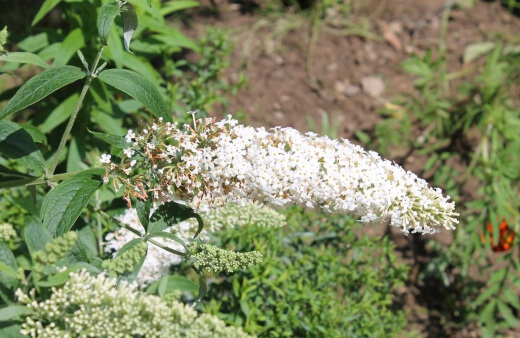 |
Buddleja × weyeriana ‘Golden Glow’This large shrub Buddleja has masses of golden yellow ball-shaped blooms that will also charm the surrounding wildlife. |  Source: parransgreenhouse.com |
Buddleja davidii ‘Black Knight’

Being the most commonly grown variety, the Buddleja ‘Black Knight’ features intense deep purple flowers that attract butterflies, birds and bees with their sweet aroma.
Growing up to 3 metres high, this medium shrub variety is easy to manage and fast-growing.
Buddleja davidii ‘Nanho Blue’

This variety has slender leaves and blooms with lilac-blue flowers on narrow stems.
Growing up to 1.5 metres high, this smaller growing variety is perfect for gardens that don’t have space for a large shrub.


Get Your Free Guide:
Master Growing Australian Natives eBook
A Must Have Complete Guide for Every Australian Garden
Get Your Free Guide:
Master Growing Australian Natives eBook
A Must Have Complete Guide for Every Australian Garden
Buddleja davidii ‘Pink Delight’

With huge long pink scented flowers, this larger growing variety is also one of the most popular
Buddleja to grow. They can reach up to 4 metres high and 2 metres wide.
Buddleja davidii ‘Royal Red’

Source: the-gardeners-choice.myshopify.com
The vibrant deep red scented flowers will also attract butterflies and other nectar-loving wildlife. This large growing variety features long, spear-shaped flowers and it can grow up to 4 metres high.
Buddleja davidii ‘White Profusion’

Being one of the oldest varieties of Buddleja, this dwarf shrub variety is very common and features long delicate white flowers with a honey scent. Attracts birds, bees and butterflies to your garden.
Buddleja × weyeriana ‘Golden Glow’

Source: parransgreenhouse.com
This large shrub Buddleja has masses of golden yellow ball-shaped blooms that will also charm the surrounding wildlife.
Regardless of which variety you decide to grow, these plants are very hardy and extremely adaptable. They share the same preferences and ideal growing conditions meaning you can apply this guide to growing and caring for any variety.
With a range of vivid colours to choose from as well as differences in size once matured, picking the right Buddleia for you is ultimately a matter of personal preference.
How to Grow Buddleia Shrubs
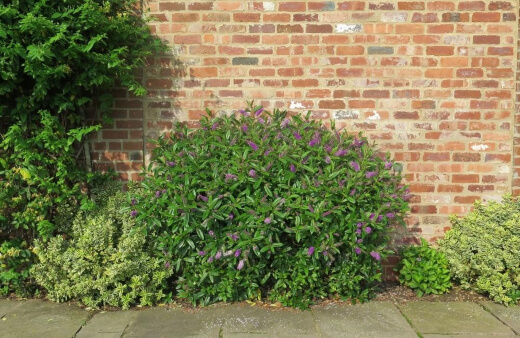
Many growers prefer to buy small Buddleia plants from reputable nurseries and plant them in the garden. However, these shrubs can be propagated from seed or by using cuttings during spring and summer.
Growing Buddleja from Seeds
These seeds will need plenty of sunlight to germinate. Scatter your seeds over slightly loose soil in your garden bed. Cover lightly with soil and keep moist once sown. The seeds can take a few months to germinate so you will have to be patient.
Propagating Buddleia using Cuttings
Take your semi-hardwood cuttings in late summer once healthy new growth has appeared.
- Take cuttings of around 10 to 15 centimetres from the plant using sharp scissors or a sharp knife. These cuttings should not have flowers.
- Remove all leaves other than the top few then place your cuttings into your propagation mixture. The top two to three notches where leaves used to be should be covered by the soil mixture.
- Keep the cuttings damp and in a well-lit location.
- New roots can take up to 6 months to develop. Thereafter, the cuttings should be ready for transplanting.
Planting Buddleias

These shrubs are known to be hardy and tolerant to a variety of conditions and environments once established. They can grow in almost any kind of climate, tolerate many different soils and can adapt very quickly.
However, to ensure you receive brilliant blooms that are not only vivid in colour but also big and healthy, there are certain conditions you should aim to provide your plant with that will allow it to thrive and grow best in your garden. Planting buddleias should be done in late Autumn to Spring.
Light
These shrubs love full sun to semi-shaded locations. They should ideally get around 6 hours of full sun each day with less harsh, filtered sun in the afternoons. Buddleia shrubs can grow in more shaded areas however the blooms will be compromised in this case.
What Type of Soil to Use
Well-draining soil is vital for these shrubs. They can grow in most types of soil and can adapt to acidic or alkaline soils. As long as the soil is well-draining, you should have a happy plant. It is advised to incorporate well broken-down compost in the soil before planting these shrubs.
How to Plant Buddleia
Pick a spot in your garden that gets healthy amounts of sunlight every day and that has well-draining soil. Spacing will differ depending on which variety you grow but in general, these shrubs grow fast and need space to mature so spacing them about 12 to 25 centimetres apart is recommended.
Planting Buddleia Shrubs in the Garden
- Loosen the soil in your desired location to a depth of about 30 centimetres.
- Add 5 to 10 centimetres of compost to the soil and mix well.
- Dig a hole at least twice as big as the current container of the plant.
- Gently remove the plant from its current container being careful not to disturb the roots as much as possible.
- Lightly tousle the roots loose and place the plant into your planting hole.
- Fill with your soil mixture until the plant crown is at the soil level.
- You can optionally add some organic mulch like bark chips or pea straw around the base of the plant to help retain moisture and control weeds.
- Gently firm the soil with your hands and water the plant well.
Buddleia Care Tips
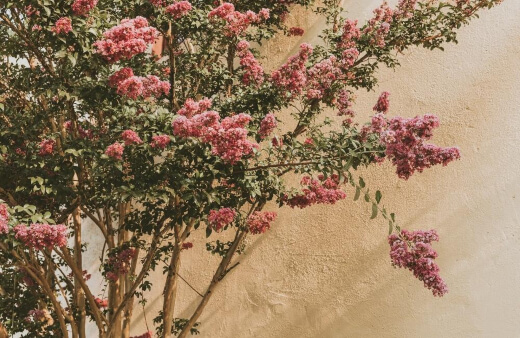
Once established, these shrubs will be tolerant to salt and drought. Overall, they do not require a lot of upkeep and as mentioned, they are tough adaptable plants.
There are a couple of ways in which you can keep your Buddleias thriving and blooming beautifully every year. Here are our top care tips for Buddleia shrubs.
Watering Buddleja
These shrubs thrive in moist soil so regular waterings are recommended. In very hot and dry periods, water the plant about once per week. In wetter, cooler climates, you can cut back on watering a little.
These shrubs can tolerate dry conditions but try to keep moisture levels healthy year-round.
Using Mulch & Compost
It is recommended to add around 5 to 8 centimetres of both organic mulch and compost every year during spring to help the plant grow effectively. This will also help the plant retain moisture and suppress weeds.
Pruning Buddleja
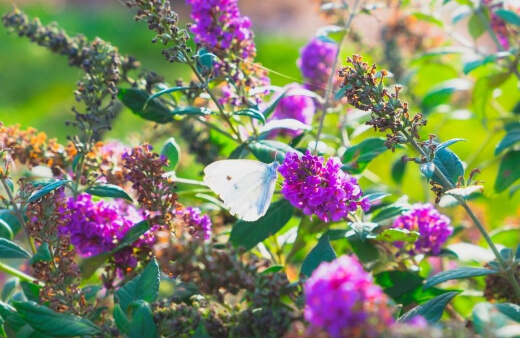
These plants can tolerate hard pruning annually in early spring to promote bushy growth. In general, you can look at cutting back about half of the previous season’s growth. Cut back any old wood or damaged stems.
Get perfect cuts with the help of our pruning shears product reviews and buying guide.
Common Buddleia Pests, Problems & Diseases
Buddleia shrubs are generally free of disease and pest issues. Commonly, these plants can attract caterpillars that may eat the leaves, but these cases rarely become too severe where numbers are a problem. Other small issues may include:
- Straggly Foliage – This is a good indicator that your plant needs a good prune. If you notice the plant becoming unkempt and messy, give it a hard prune annually in early spring.
- Invasive Traits – Buddleia plants can become invasive and crowd out other plants if left to grow rampant. To avoid accidental spreading, you can remove old flowerheads in Autumn before seed dispersal and be sure to prune the shrub annually.
Their root systems can also become invasive so don’t plant your Buddleia near any buildings, paving or walls.
Buddleia Frequently Asked Questions
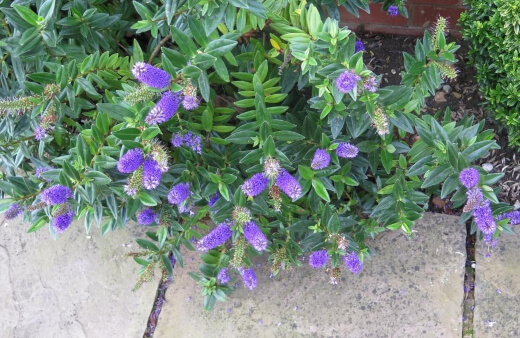
Do hummingbirds like butterfly bushes?
Due to the high nectar count in the Buddleia flowers, hummingbirds and other wildlife are very attracted to these plants. If you are looking at creating a garden that attracts birdlife and butterflies, these are the perfect plants for the job.
Can buddleia be kept small?
Hard pruning annually in early spring can help keep the shrubs smaller, but some varieties will still be able to grow large despite being pruned. If you are looking for a smaller variety, consider planting varieties such as Buddleja ‘Nanho Blue‘ or Buddleja ‘White Profusion‘ for smaller shrubs.
Why is my buddleia drooping?
If your leaves are wilting and drooping, this could indicate that your plant is suffering from a lack of water. Increase your watering frequency during the growing season in early spring and also during dry spells.
Prefer to grow an Aussie native shrub in your garden? Check our other helpful guide here:
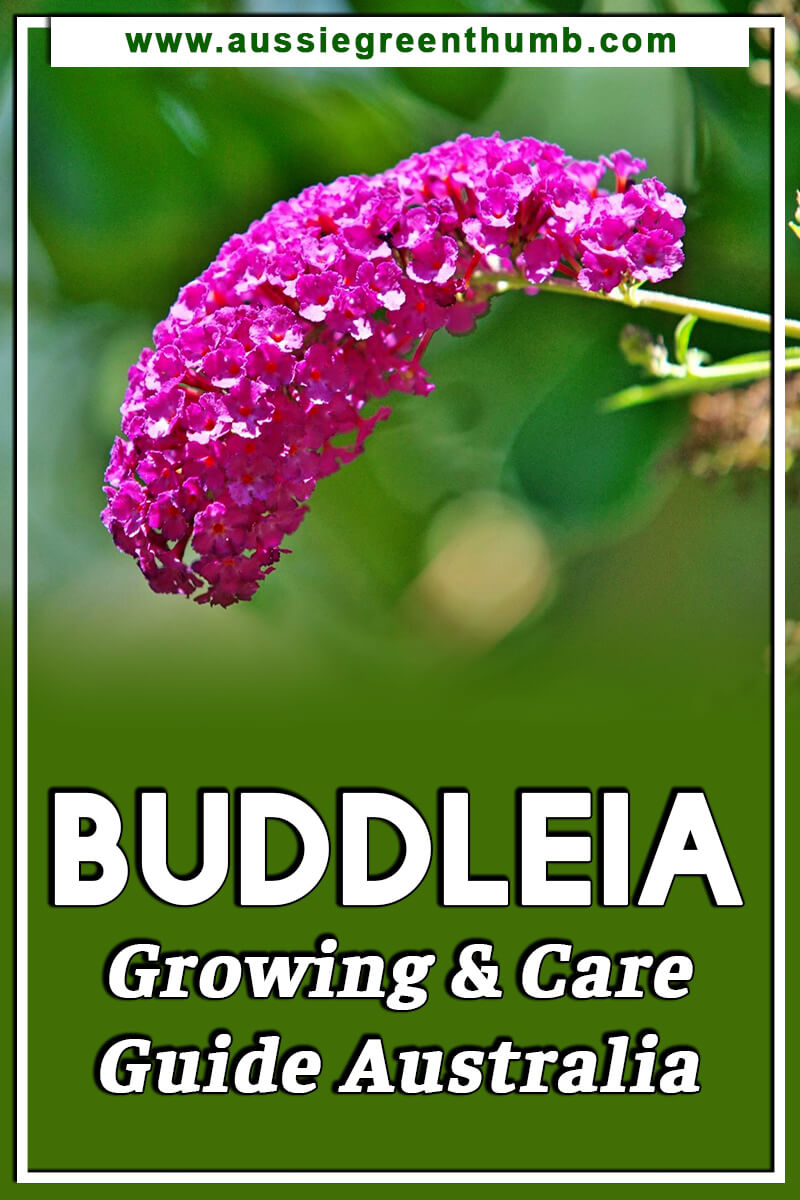
Transform Your Harden with the Vibrant Allure of Buddleia
Spoiling growers with choice and variety, these deciduous shrubs are a must-have for those looking for a plant that can add vivid colour to the garden while being easy to grow and maintain.
With sweetly scented flowers that attract butterflies and birdlife, this plant can add luscious and wild elements to any garden and seamlessly integrate itself into any collection.
With the ability to thrive in the Australian climate, the Buddleia shrub varieties are the perfect pick for your next garden plant.
Published on March 17, 2022 by Maisie Blevins
Last Updated on February 13, 2024




